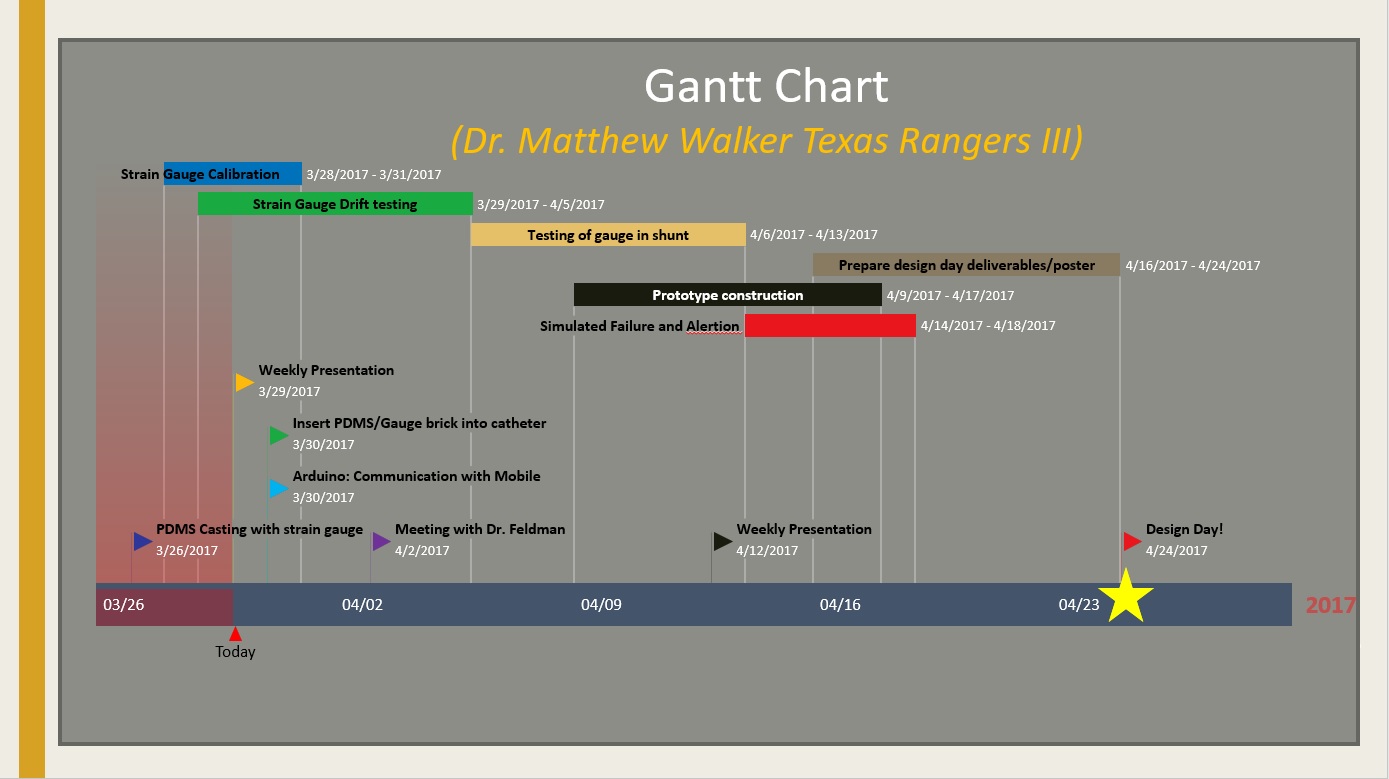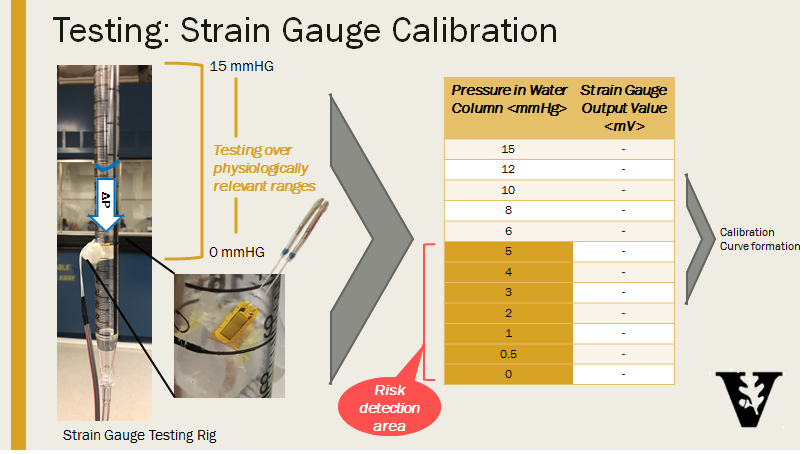Progress
Progress Reports:
Under “Recent Posts” (both written and oral progress reports are updated).
Updated Gantt Chart
For March-April 2017:

Different Options Considered:
We have been delving deeper into different pressure measuring mechanisms and assessing their feasibility for our project. The following have been considered:
a. Piezoelectric pressure sensors: Ruled out due to high drift and low sensitivity to changes occuring over long periods of time, which is the case of ICP.
b. Intraocular MEMS based pressure sensors: Ruled out as there is no practical way to communicated the detected pressure changes.
c. Fiberoptic sensors: These show great promise in literature and have been encouraged by both Dr. Feldman and Dr. Miga. We have reached out to Opsens to find out about commercially available sensors.
d. Strain gauge sensors: These have been encouraged by Dr. Miga. We are trying to find commerical information and will order some to test out soon.


Finalized Shunt Design:
The use of strain gauges in order to detect differential pressure between the brain and the shunt has been decided upon in order to detect proximal failure. If there is proximal failure, there will be differential pressure between the two fluids. If there is no proximal failure, there will be no differential pressure. The differential pressure will be detected by the strain gauge and communicated to an external smartphone via Near Field Communication.

Shunt Design Diagram:


Testing Results & Plan:
- Since our design involves covering up 4 holes in the shunt’s proximal tip to make the PDMS window, we wanted to check whether this would affect CSF flow into the shunt. We tested this using a CSF simulant (saline+albumen) and clogging different number of holes using parafilm. We did not find a significant decrease in flow rate when covering up to half of the holes.

- The next testing step is calibrating the strain gauge’s voltage output to the applied differential pressure. Using a similar set-up as in flow testing, we will embed the strain gauge in a water column on a PDMS stage and change the water column height (calibrated to physiological pressure in mmHg), recording the voltage output for different pressures applied. We have run into some obstacles (op-amps blowed up), but are hoping to have this data soon.


Connect with Vanderbilt
©2024 Vanderbilt University ·
Site Development: University Web Communications